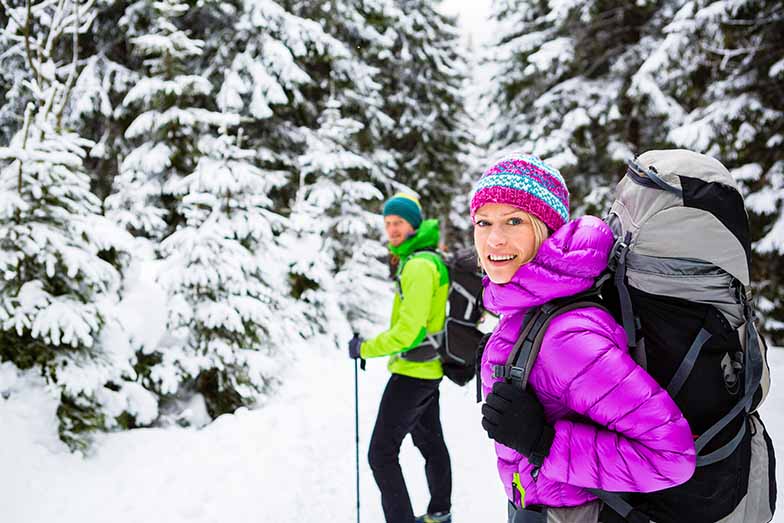The ideal tent for a winter camp

Experienced campers are quick to note that the proper camping gear and equipment are essential for cold-weather camping. A frigid night makes sleeping difficult and could even derail the next day’s activities. A double-layer tent is critical: When selecting your winter tent, pay attention to its ventilation. If the air circulation is inadequate, condensation can build up, accentuating the cold. In addition, gear and clothing could absorb moisture. Also look for tents made with waterproof fabric and, if you’re hiking, a lightweight tent is better. Thanks to modern technology, ultra-light waterproof tents are available in stores and online. When reviewing tents, do remember the tent floor: it should be sturdy and waterproof. Waterproofing kits, for extra protection, can easily be found online.
A winter-specific sleeping bag is essential

Similar to the selection of a tent, your choice of a sleeping bag will depend on the winter conditions and type of camping you’re expecting. Your height and gender will also play a role – the core temperature of a man is slightly higher than that of a woman. In other words, women may feel colder than men. Fortunately, you can choose a wide array of cozy sleeping bags to stay warm. Lightweight and compressible, goose or duck down-filled sleeping bags are ideal for winter camping and come in a range of models and prices. Most are mummy-style: the tapered, narrow shape provides better insulation. Some bags even feature pockets, vents, glow-in-the-dark zippers or other useful features. While down fill tends to be warmer and lighter, sleeping bags with synthetic insulation are also available.
Winter camping gear: What to wear

Staying warm is a priority when camping in cold weather. Loose layers are the most practical: clothing can be added or removed as you warm up or cool down; the looseness creates warming air pockets between layers. Make sure you have a hat, gloves, thermal underwear, and wool socks! Wool is ideal, particularly Merino wool, which wicks away moisture. Synthetic fabrics like polypropylene fleece are also effective. Cotton is not advised for cold-weather camping, as it absorbs moisture, which can lower your body temperature.
Don’t wear too many layers when you get into your sleeping bag – if you warm up and start sweating, you’ll only lower your body temperature. If you don’t feel warm enough at first, you can always drape various layers over the bag.
As for hiking shoes – make sure yours are waterproof!
Last, consider bringing hand-warmers. These small, handy devices are available in single-use packets or as rechargeable units.
A mat suitable for winter camping is crucial

Sleeping pads put an extra layer between your sleeping bag and the tent floor – and another layer between you and the cold ground. A closed cell foam mat or a self-inflating foam pad is lightweight and effective. Add a second mat and you’ll be even more comfortable. In addition, a tent footprint – a liner placed under the tent – adds warmth and protection against water; it can also help extend the life of your tent.
Winter camping gear list and some life-saving camping tips

– Pack a headlamp, batteries, a power bank, a lighter and a box of matches, along with a sharp knife.
– Remember to keep your batteries warm – you’ll need them for your headlamp, power bank, and camera.
– Keep your matches dry – or bring waterproof matches.
– Bring fire starters. These are available online and at camping/hardware stores.
– Keep your face uncovered when sleeping; this prevents moisture from your breath condensing inside the sleeping bag.
– No matter how cold it is outside, leave a vent open on your tent to ensure air circulation.
– Bring a first-aid kit. As well, consider learning some basic first aid techniques.
Winter camp dining
The most basic rule is to stay hydrated! Make sure you have a reliable source of clean drinking water, whether you bring it, or whether you are melting, boiling and sanitizing snow. Hot non-alcoholic drinks, and high-calorie foods will maintain your energy and heat levels. There are numerous freeze-dried meals available on the market; these civilian versions of the classic military meals-ready-to-eat (MREs) are lightweight and filling. Many even have their own heating source. If you’re up to bringing fresh food, remember potatoes – roast them in the fire for a delicious and filling snack.

